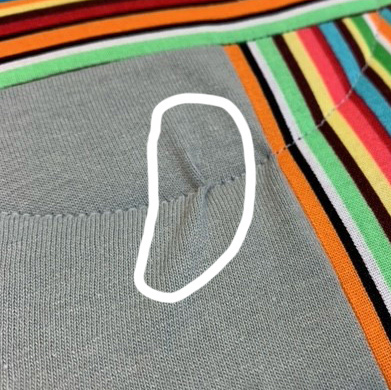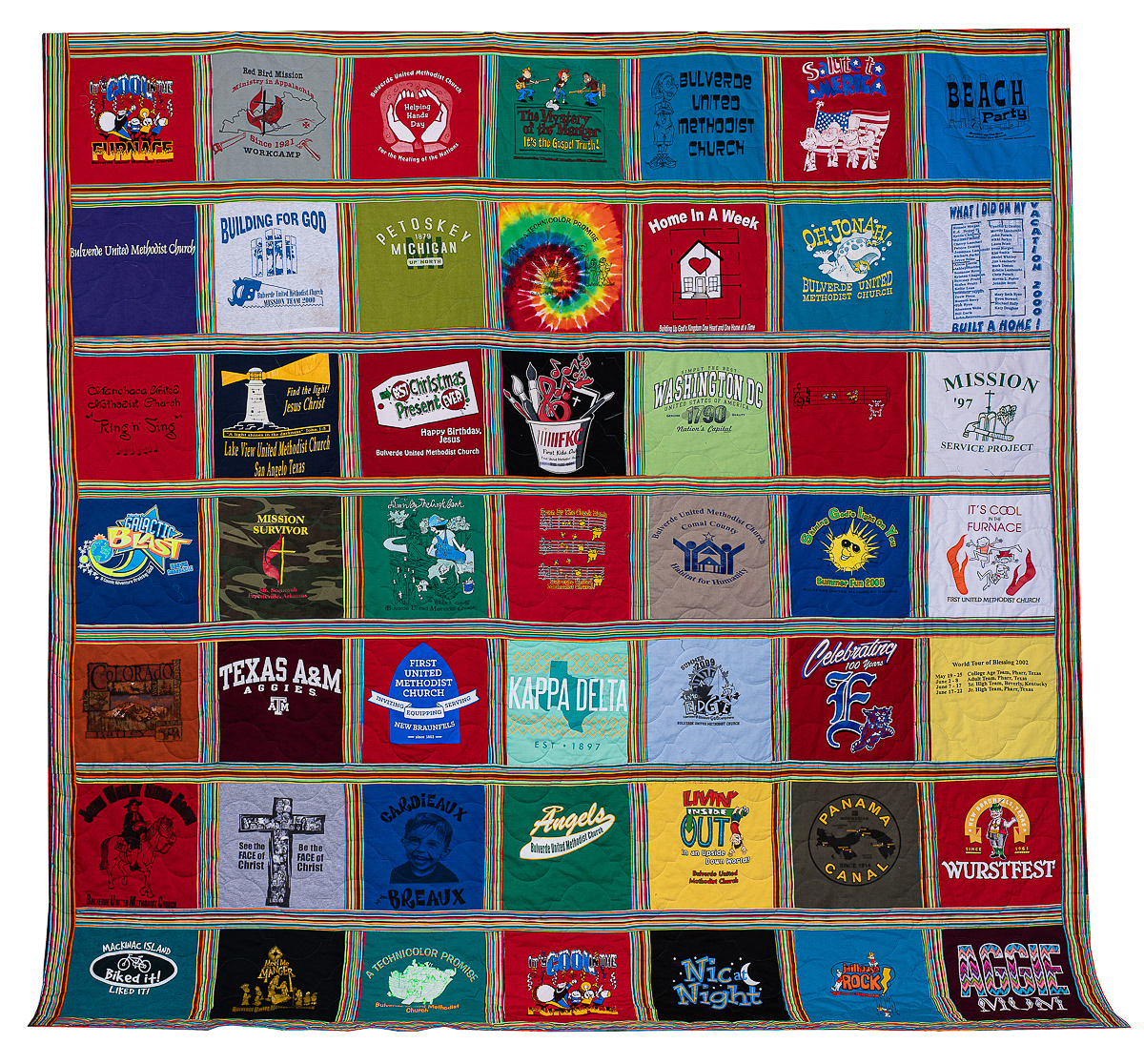There are many very good You Tube videos on how to make a T-shirt quilt, and I highly suggest you watch several before you start one. They all usually talk about the use of Interfacing (also called stabilizer) on the back side of your T-shirts, but they rarely ever tell you why that is very important to the longarm quilter.
In T-shirt quilting, the role of the interfacing is to stiffen and stabilize the stretchy T-shirt fabric so it doesn’t get pulled out of shape while you cut and sew on it. T-shirt material can be very stretchy. When a longarm quilter puts a quilt top over batting and backing material on their longarm machine, the last thing they want is the quilt top material to move around or pucker up. As the longarm machine stitches a quilt pattern the T-shirt material can move and the stitches can make puckers and even folds in the t-shirt material. It can ruin the way a quilt looks. Correctly applying interfacing (stabilizer) to the back of the T-shirt material when building your quilt can pretty much prevent this from happening. Lots of You Tube videos recommend Pellon P44F JAS Fusible Interfacing. I have a client that uses Pellon EK130 Easy Knit Interfacing. She has made many T-shirt quilts and hers have no problems with shifting or puckering during the quilting process. She also tells me that she determines the stretch of the T-shirt and applies the interfacing the opposite stretch to stabilize the T-shirt as Pellon EK130 has a lengthwise grain for stability and a crosswise stretch. Pellon EK130 is more expensive but I know it works well. I would recommend testing each kind on some throw away T-shirt material to see which one you like best.
As a longarm quilter, I usually stress squaring a quilt as the number one thing to do. When it comes to T-shirt quilts I would say applying a good quality interfacing correctly is just as important. Below are a couple of pictures of what can happen if the correct interfacing is not used, or if it is not applied correctly. I have also posted a couple of completed T-shirt quilts that I have recently quilted for clients.
Happy Quilting!
Sherrie

Loose shirt fabric puckers while stitching

This picture looks better than real life
For the record, I removed these stitches and re-pressed this quilt which made the interfacing stick better. After that it quilted fine.


Here are a couple of T-shirt quilts I have recently worked on. The one on the left has 49 shirts and is huge. The one on the right used the EK130 Interfacing.
